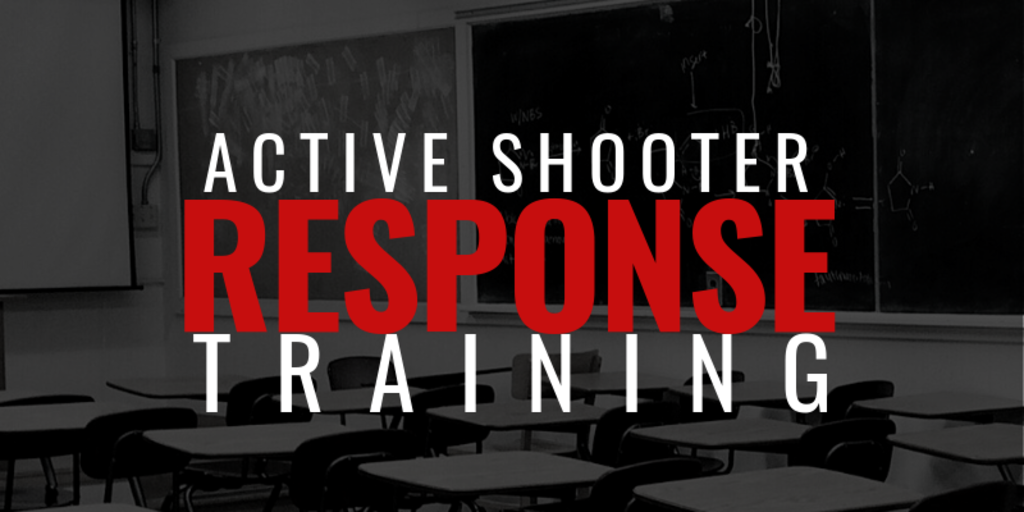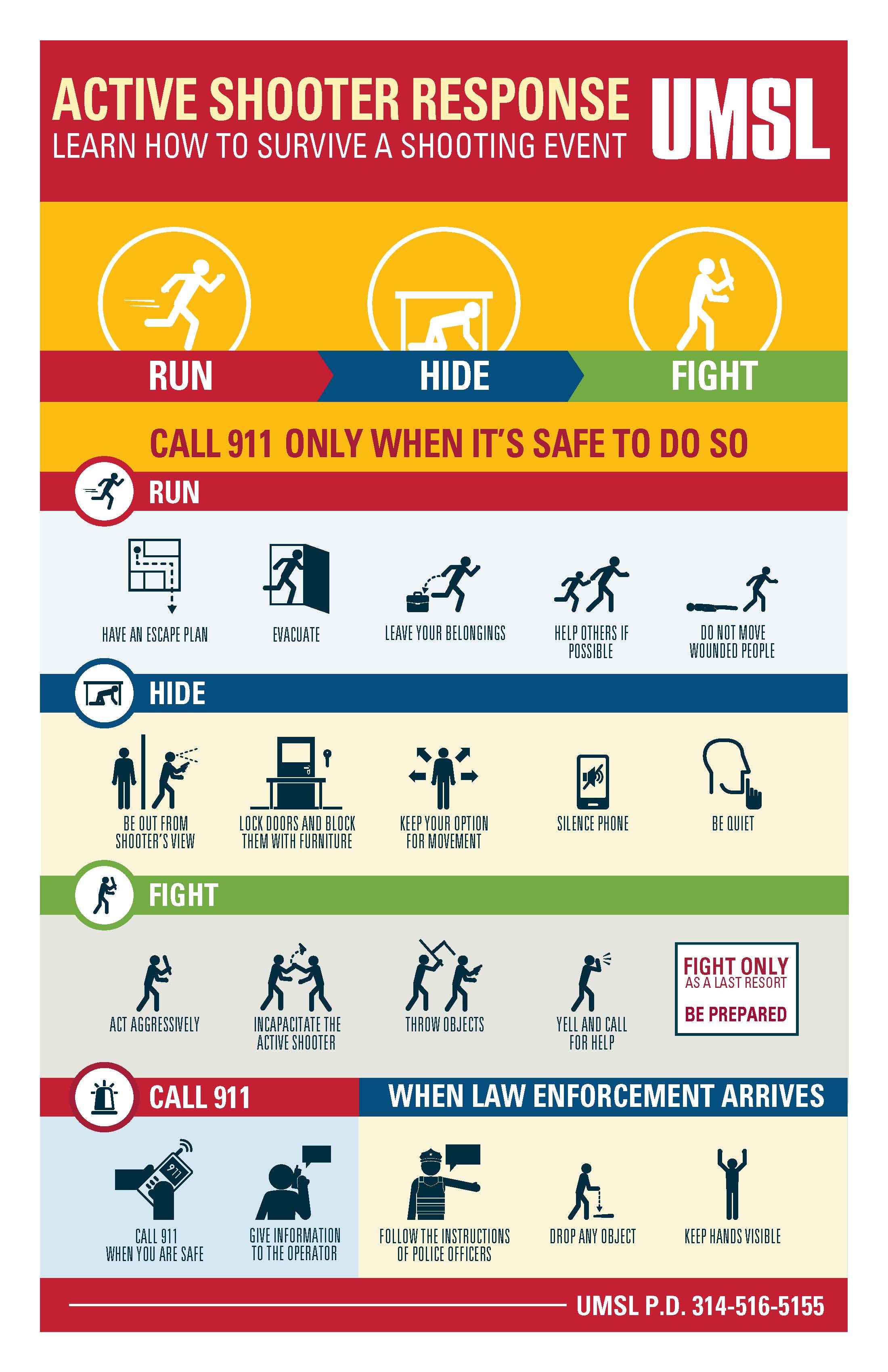Just How Active Shooter Training Can Save Lives in Situation Situations
Just How Active Shooter Training Can Save Lives in Situation Situations
Blog Article
Executing Active Shooter Training: Best Practices for Creating a Safe and Prepared Area Setting
As areas face the unsettling truth of active shooter incidents, the implementation of detailed training programs ends up being crucial. An effective strategy depends upon not just the growth of tailored educational programs that resolve local threats yet likewise the involvement of diverse stakeholders. By using a range of training techniques, neighborhoods can ensure that all participants are equipped with crucial skills. The challenge exists in preserving an adaptive framework that evolves with emerging risks. What are the critical components that can transform a standard training program right into a robust design for community strength?

Comprehending the Requirement for Educating
In a period marked by boosting events of violence in public rooms, comprehending the requirement for energetic shooter training has actually never ever been extra vital. Extensive training efforts can furnish participants with the expertise and abilities to react emphatically.
Additionally, the psychological effect of violence on people and communities can not be overemphasized. Training promotes a sense of empowerment and readiness, allowing individuals to really feel more protected in their environments. It likewise advertises a culture of safety, where understanding and watchfulness end up being essential components of life. The benefits of active shooter training extend past instant feedback; they include improving interaction protocols and boosting overall security measures within companies.
Key Parts of Effective Programs
Effective energetic shooter training programs integrate several vital elements that boost readiness and action abilities. Initially, detailed curriculum growth is essential, making sure that training web content is pertinent, evidence-based, and customized to the certain needs of the company or neighborhood. This includes recognizing the dynamics of energetic shooter occurrences and the psychological effect on people included.
Second, reasonable training circumstances ought to be used to simulate potential scenarios, allowing individuals to practice decision-making and feedback methods in a controlled atmosphere. These drills facilitate muscular tissue memory and develop self-confidence amongst participants.
Third, a concentrate on communication protocols is important. Developing clear lines of communication among law enforcement, emergency -responders, and individuals makes sure worked with feedbacks throughout an event. Regular updates and refresher course courses assist maintain interaction paths clear and efficient.
4th, recurring assessment and comments mechanisms ought to be integrated into the training program - active shooter training. Examining the efficiency of training with individual comments and performance metrics enables constant enhancement
Lastly, cultivating a society of security and preparedness within the area encourages vigilance and proactive steps, making certain that individuals are not just skilled yet additionally participated in maintaining a safe atmosphere.
Engaging Neighborhood Stakeholders

To webpage properly involve these stakeholders, it is necessary to communicate the goals and advantages of the training. Organizing educational sessions can aid clarify the training's purpose, address problems, and detail the functions each stakeholder might play. Creating a stakeholder advising board can assist in recurring dialogue, allowing for diverse point of views and understandings to be incorporated right into the training program.
Structure relationships with community leaders and companies is likewise critical. Their assistance can improve outreach efforts, rise engagement, and make sure that training is tailored to the unique demands of the neighborhood. In addition, stakeholders can aid in distributing details and sources, enhancing the message of security and preparedness.
Inevitably, engaging area stakeholders not just strengthens the training initiative yet also grows a sense of possession among residents, leading to a much more resistant and informed area with the ability of responding properly to potential risks.
Training Delivery Techniques
Making use of a variety of training delivery methods is important to fit the diverse learning designs and demands of individuals in energetic shooter training programs (active shooter training). Efficient training can take numerous types, consisting of lectures, hands-on simulations, on-line modules, and interactive workshops. Each technique offers an unique objective and can enhance the overall discovering experience

On-line modules use versatility and access, enabling individuals to learn at their own rate. These can consist of video clips, quizzes, and conversations to determine Resources understanding. Interactive workshops encourage team conversations and analytical, advertising team effort and interaction abilities.
Incorporating a blended method that integrates these approaches not only enriches the training experience but also ensures that individuals are better prepared to respond successfully in case of an active shooter situation (active shooter training). By resolving various discovering choices, companies can produce a much more educated and receptive neighborhood
Constant Examination and Enhancement
Regular assessment and improvement of active shooter training programs are important to preserving their significance and efficiency. As dangers develop, so must the methods and methodologies utilized in training. Continuous assessment makes certain that training content mirrors the most recent intelligence on energetic shooter incidents, including lessons discovered from recent events and adjusting for emerging fads.
To facilitate this procedure, organizations must develop responses devices that include individual assessments, professional testimonials, and event debriefs. Collecting information on individual performance during drills and exercises is essential, as it highlights areas requiring improvement and informs future training sessions. Additionally, engaging with police and emergency situation -responders can offer beneficial insights into the usefulness and applicability of training procedures.
Consistently arranged testimonials of training materials and methods should be mandated, cultivating a setting of advancement and adaptability. Organizations needs to likewise encourage a culture of recurring discovering, where team members feel encouraged to suggest changes based on their experiences. By devoting to continuous analysis and renovation, organizations not only improve the performance of their energetic shooter training programs however also enhance their overall dedication to safety and security and readiness within the area.
Conclusion
Finally, efficient execution of active shooter training necessitates a thorough approach that focuses on community involvement and sensible simulations. By developing tailored curricula, incorporating diverse training techniques, over here and cultivating cooperation amongst stakeholders, neighborhoods can improve preparedness. Continuous evaluation and feedback devices are essential for adapting programs to emerging risks, therefore enhancing general safety and security. Eventually, a dedication to recurring training and renovation cultivates a society of alertness and preparedness, ensuring a more secure atmosphere for all community members.
Report this page